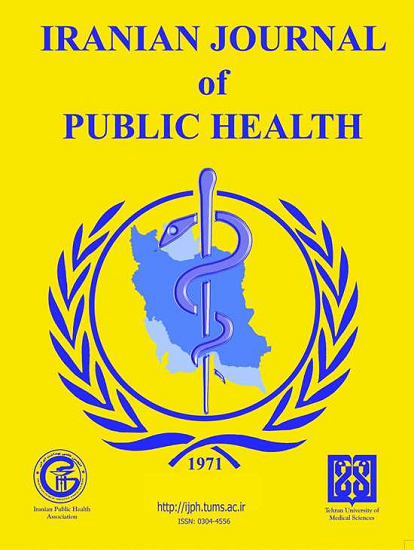The Role of State Policy in Addressing Cancer Trends: A Case Study from the Akmola Region
Abstract
Background: Cancer is a major public health challenge in Kazakhstan, with significant regional disparities in incidence and access to care. The Akmola Region faces socioeconomic and healthcare barriers affecting oncology outcomes. We examined the role of state policy in addressing cancer trends and proposed evidence-based interventions.
Methods: A retrospective descriptive and analytical study was conducted using cancer incidence data from 2009 to 2023, obtained from the Ministry of Health of Kazakhstan. Age-standardized rates (ASRs) were calculated using the WHO guidelines. Joinpoint regression analysis was applied to assess trends. Social factors, including income and access to care, influenced cancer rates. Rural areas faced notable disparities in oncology services.
Results: Over 15 years, 26,625 new cancer cases were recorded, with 48.9% in men and 51.1% in women. The most prevalent cancers were breast (11.8%), colorectal (9.5%), and gastric (8.8%). A decline in cancer incidence occurred in 2020, likely due to healthcare service disruptions during COVID-19. Social factors like income and care access shaped cancer rates. Rural areas faced notable disparities.
Conclusion: Strengthening state policies is crucial for reducing the cancer burden. Recommendations include expanding screening programs, improving healthcare infrastructure, and addressing regional inequalities through intersectoral collaboration. Implementing evidence-based strategies and integrating global best practices can enhance oncology care and reduce disparities.
2. Bray F, Laversanne M, Sung H, et al (2024). Global cancer statistics 2022: GLO-BOCAN estimates of incidence and mortality worldwide for 36 cancers in 185 countries. CA Cancer J Clin, 74(3):229-263. doi:10.3322/caac.21834
3. Global Burden of Disease 2019 Cancer Collaboration, Kocarnik JM, Compton K, et al (2022). Cancer Incidence, Mor-tality, Years of Life Lost, Years Lived With Disability, and Disability-Adjusted Life Years for 29 Cancer Groups From 2010 to 2019: A Systematic Analysis for the Global Burden of Disease Study 2019. JAMA Oncol, 8(3):420-444. doi:10.1001/jamaoncol.2021.6987
4. Bureau of National Statistics of the Repub-lic of Kazakhstan (2021). Demographic sta-tistics. Accessed Dec 29, 2024. Available from: https://stat.gov.kz/.
5. The World Bank (2024). World Development Indicators: Rankings by GDP and population. Accessed Dec 29, 2024. Available from: https://databank.worldbank.org/.
6. Bureau of National Statistics of the Repub-lic of Kazakhstan (2024). Population of Akmola Region as of December 1, 2024. Ac-cessed Dec 29, 2024. Available from: https://stat.gov.kz/.
7. Official Information Resource of the Prime Minister of Kazakhstan (2022). Nur-Sultan: Prime Minister of the Republic of Kazakhstan. Accessed Jan 18, 2025. Available from: https://primeminister.kz/ru/news/reviews/po-itogam-9-mesyacev-2022-goda-v-akmolinskoy-oblasti-otmechaetsya-snizhenie-pokazatelya-obshchey-smertnosti-naseleniya-na-27-21101039
8. Marmot M, Wilkinson R (2006). Social deter-minants of health. 2nd edition. Oxford uni-versity press. Oxford; New York, 366 p.
9. Igissin N, Toguzbayeva A, Telmanova Z, et al (2024). Regional analysis and stage-specific incidence of breast cancer in Kazakhstan: A comprehensive study. Clinical Epidemiology and Global Health, 30(3):101837. doi:10.1016/j.cegh.2024.101837
10. Taszhanov R, Telmanova Z, Zhadykova Y, et al (2022). Geographic Variability of Gastric Cancer Incidence in Kazakh-stan. Asian Pac J Cancer Prev, 23(6):1935-44. doi:10.31557/APJCP.2022.23.6.1935/
11. United Nations Development Programme (2017). Institutional Coordination Mecha-nisms: Guidance Note. UN DESA, New York, 59 p. Available from: https://sustainabledevelopment.un.org/con-tent/documents/2478Institutional_Coordina-tion_Mechanisms_GuidanceNote.pdf
12. Ahmad OB, Boschi-Pinto C, Lopez AD, et al (2001). Age standardization of rates: a new who standard. GPE Discussion Paper Se-ries: No.31 EIP/GPE/EBD World Health Organization.
13. National Cancer Institute (2013). Recommen-dations on the use of the World Standard (WHO 2000-2025). Accessed April 02, 2024. Available from: http://seer.cancer.gov/stdpopulations/world.who.html
14. Merkov AM, Polyakov LE (1974). Sanitary statistics. Leningrad, Medicine, 384 p.
15. Glanc S (1999). Biomedical statistics. Moscow, Practice, 460 p.
16. Isabel dos Santos Silva (1999). Cancer epide-miology: principles and methods. Lyon, France, IARC, 442 p.
17. Kim HJ, Fay MP, Feuer EJ, Midthune DN (2000). Permutation tests for joinpoint regression with applications to cancer rates. Stat Med, 19(3):335-351. doi:10.1002/(sici)1097-0258(20000215)19:3<335::aid-sim336>3.0.co;2-z
18. Zielonke N, Gini A, Jansen EEL, et al (2020). Evidence for reducing cancer-specific mortality due to screening for breast cancer in Europe: A systematic review. Eur J Cancer, 127:191-206. doi:10.1016/j.ejca.2019.12.010
19. Toguzbayeva A, Telmanova Z, Khozhayev A, et al (2021). Impact of Screening on Breast Cancer Incidence in Kazakhstan: Results of Component Analysis. Asian Pac J Cancer Prev, 22(9):2807-2817. doi:10.31557/APJCP.2021.22.9.2807
20. Carneiro PBF, Rodrigues EA, Lampugnani LD, et al (2023). Eating Habits, Physical Activity Practice and Clinical Prognosis of Colorectal Cancer Patients with Overweight/obesity. Cancer Screening and Prevention, 2(4):214-228. doi: 10.14218/CSP.2023.00009S.
21. Zheng L, Wu J, Zheng M (2021). Barriers to and Facilitators of Human Papilloma-virus Vaccination among People Aged 9 to 26 Years: A Systematic Review. Sex Transm Dis, 48(12):e255-e262. doi:10.1097/OLQ.0000000000001407
22. Kim DY (2021). History and future of hepati-tis B virus control in South Korea. Clin Mol Hepatol, 27(4):620-622. doi:10.3350/cmh.2021.0277.
23. Liao SH, Chen CL, Hsu CY, et al (2021). Long-term effectiveness of population-wide multifaceted interventions for hepa-tocellular carcinoma in Taiwan. J Hepatol, 75(1):132-141. doi:10.1016/j.jhep.2021.02.029
24. Huang HL, Leung CY, Saito E, et al (2020). Effect and cost-effectiveness of national gastric cancer screening in Japan: a mi-crosimulation modeling study. BMC Med, 18:257. doi: 10.1186/s12916-020-01729-0.
25. US Preventive Services Task Force, Gross-man DC, Curry SJ, et al (2018). Screening for Prostate Cancer: US Preventive Ser-vices Task Force Recommendation Statement. JAMA, 319(18):1901-1913. doi:10.1001/jama.2018.3710
26. Bennett A, Beck A, Shaver N, et al (2022). Screening for prostate cancer: protocol for updating multiple systematic reviews to inform a Canadian Task Force on Preventive Health Care guideline update. Syst Rev, 11(1):230. doi:10.1186/s13643-022-02099-9
27. Usher-Smith J, Simmons RK, Rossi SH, Stew-art GD (2020). Current evidence on screening for renal cancer. Nat Rev Urol, 17(11):637-642. doi:10.1038/s41585-020-0363-3
28. He Z, Ke Y (2020). Precision screening for esophageal squamous cell carcinoma in China. Chin J Cancer Res, 32(6):673-682. doi:10.21147/j.issn.1000-9604.2020.06.01
| Files | ||
| Issue | Vol 54 No 6 (2025) | |
| Section | Original Article(s) | |
| DOI | https://doi.org/10.18502/ijph.v54i6.18899 | |
| Keywords | ||
| Cancer incidence Public health Social determinant Kazakhstan | ||
| Rights and permissions | |

|
This work is licensed under a Creative Commons Attribution-NonCommercial 4.0 International License. |





